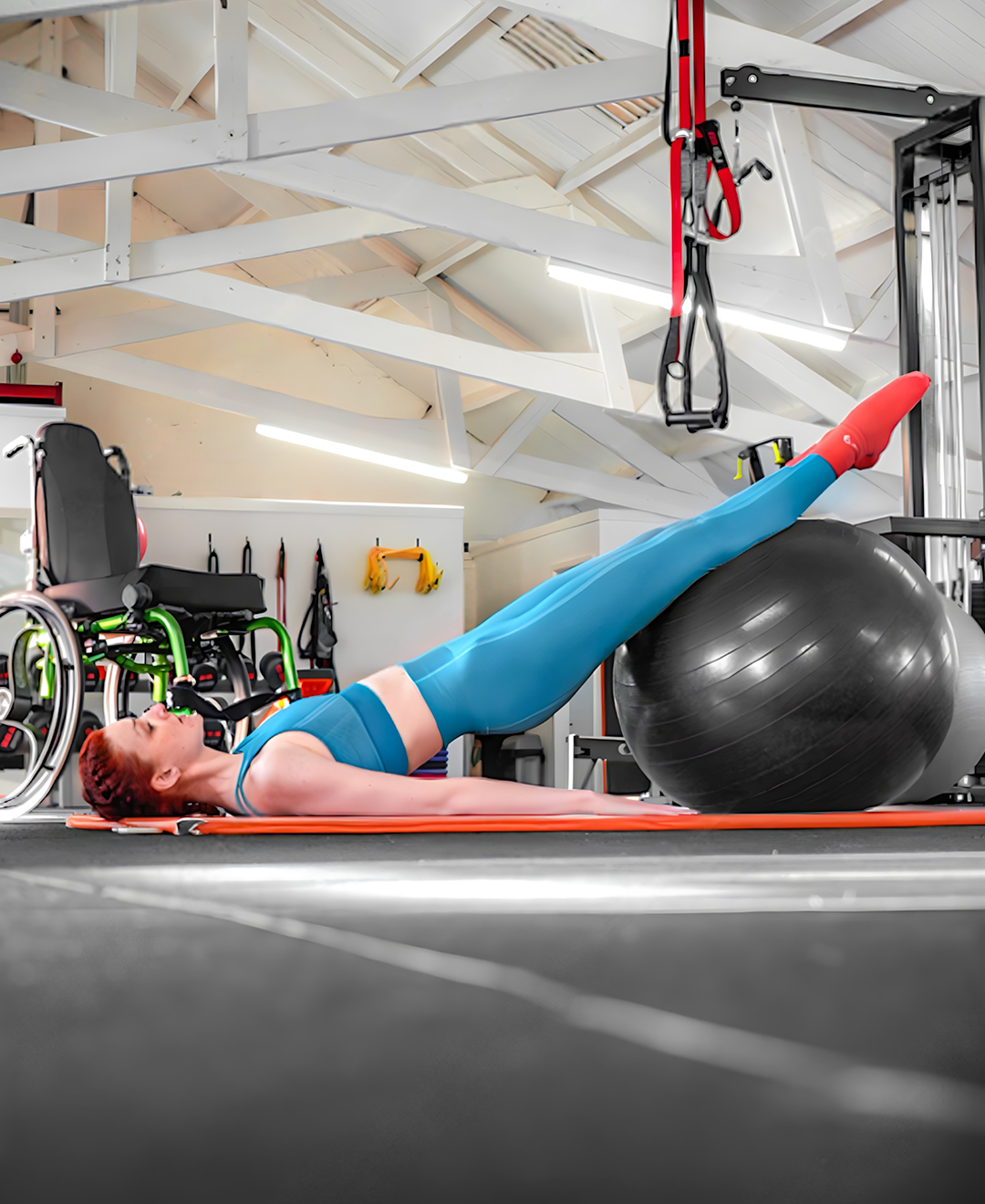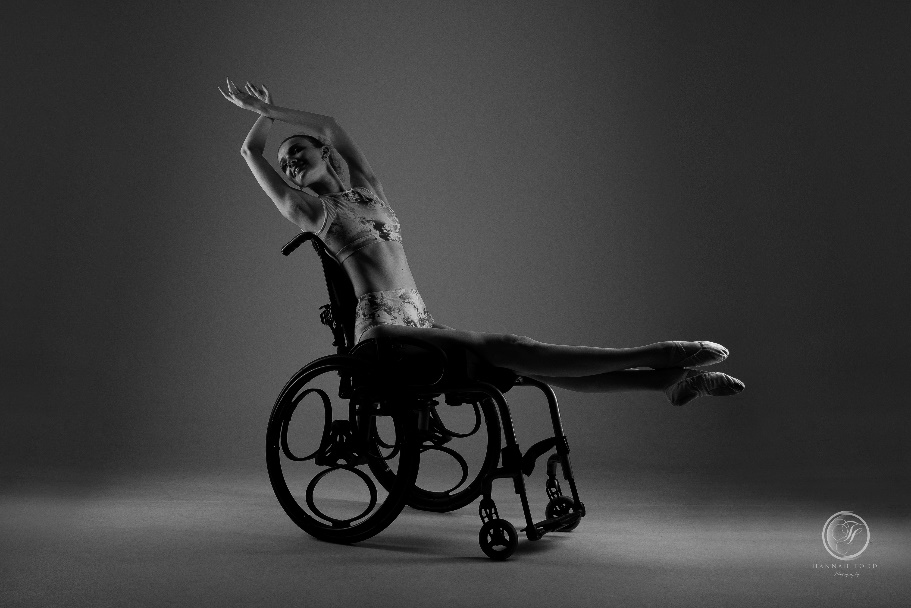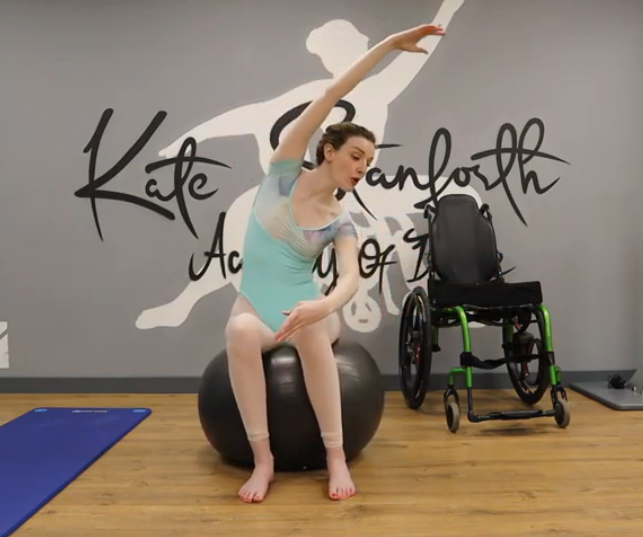Beyond hypermobility-Dancing with Ehlers-Danlos Syndrome (EDS)
In the compelling research article "Beyond Hypermobility: Dancing with Ehlers-Danlos Syndrome (EDS)," author Charmaine Tay delves into the challenges and complexities faced by dancers diagnosed with Ehlers-Danlos Syndrome, particularly the hypermobile type (hEDS). Through the detailed journey of Kate Stanforth—a promising dancer whose career was profoundly affected by hEDS—this piece offers crucial insights into the intersection of advanced dance training and chronic health conditions.
Kate’s narrative brings to light the critical need for early diagnosis and nuanced understanding of hEDS, which goes far beyond the initial benefits of being "born flexible." Her experiences underline the importance of appropriate medical oversight, which is often lacking in the competitive dance environment. As her condition progressed, it became evident that managing her symptoms with informed, supportive practices was essential to maintaining her involvement in dance.
This article is especially relevant to practitioners and students of the Progressing Ballet Technique (PBT). PBT's specialized approach, which incorporates the use of yoga balls and resistance bands to enhance muscle strength and stability, is not just beneficial but potentially transformative for dancers with hEDS. These tools and techniques are critical in addressing the proprioceptive challenges and joint instability that Kate and others with hEDS frequently encounter. Indeed, Kate herself has experienced significant benefits from integrating PBT exercises into her routine, noting improvements in balance, strength, and joint awareness.
Charmaine Tay, equipped with her M.Sc. in Dance Science, provides a clear differentiation between common joint hypermobility and the more severe hEDS, advocating for a shift in how these conditions are perceived and managed within the dance community. Her research calls for a broader application of practices like those promoted in PBT, emphasizing their role not only in enhancing performance but also in preserving the health and careers of dancers.
Please see the full research below for an in-depth exploration of this critical issue, and discover how PBT can be a key component in managing and mitigating the challenges faced by dancers with hypermobile EDS.

Dancing in the shoes of Kate Stanforth
As dancers, we have all heard about joint hypermobility syndrome (JHS)- the condition for when you are “born flexible” and can extend or stretch your joints beyond a normal range of motion with ease, and without pain. Hypermobility has always caused dancers to be more susceptible to injuries due to the unstable support of stretchy ligaments and an impairment of their sense of proprioception at their hypermobile joints, but what if it's beyond hypermobility (JHS) and something more?
Kate Stanforth started dancing at the tender age of 2, like many other children. At the age of 8, she started training towards becoming a professional ballerina- this meant intensive training at the studio before and after school on weekdays and for six hours every weekend. Kate excelled in ballet and achieved distinctions in all her exams, and was even nominated for international awards. Over the years, pointe work was giving her stress fractures on her left ankle. As a young dancer who didn’t know better, she strapped it up and kept going. She also started feeling fatigued during training and her joints were clicking more and more, but like many of us, she pushed through.
One day, at the age of 14, out of exhaustion from training, she crawled up the stairs as her legs couldn’t climb another step further. She then became really unwell and her health deteriorated to the extent that she struggled with walking on a daily basis. A year on, her condition continued to decline to a point where she not only had to be spoon-fed but even had to use the wheelchair and suffered from episodes of paralysis. She spent her next few years in a perpetual cycle of minuscule improvements followed by relapses and was finally diagnosed with Ehlers-Danlos Syndrome (EDS) Type-3, also known as hypermobile EDS (hEDS) only 6 years later. By that point, she was already having approximately 12 dislocations a day and her dream of becoming a professional ballerina couldn’t be more distant. What is exactly is hEDS and how does it differ from the common joint hypermobility syndrome (JHS) that we already know of? Let’s look at the symptoms differentiating the two as well as understanding why the diagnosis of this illness is always delayed for too long.

Hypermobility Spectrum - Differentiating JHS and hEDS
ince 2017, there have been major revisions to the approach to joint hypermobility as a whole. The hypermobility spectrum disorder (HSD) was created, ranging from asymptomatic joint hypermobility at one end (a person who has no other symptoms other than their joints’ capacity to move in excessive range), through to hypermobile EDS (hEDS) at the other end. In other words, not everyone with joint hypermobility has hEDS, but everyone with hEDS has hypermobility as one of its symptoms amongst many others.
Ehlers-Danlos syndrome hypermobile type (hEDs) is the most common type of EDS (amongst 13 other types of EDS) affecting 1 in 5000 people worldwide qualifying as a rare disease. However, this disease has no known genetic aetiology responsible for any significant portion of this population. In some cases, people inherit EDS because of an abnormal gene from one or both parents, however, it can also be caused by a spontaneous mutation that is not inherited from either of the parents. As a result, the diagnosis of EDS is entirely clinical rather than medical (this means that the diagnosis is derived from signs and reported symptoms, rather than a laboratory diagnosis involving tests).
These signs and symptoms include:
Joint hypermobility (Beighton test)
The Beighton score: ≥6 for pre-pubertal children and adolescents, ≥5 for pubertal men and women up to the age of 50, and ≥4 for those >50 years of age for hEDS.
Recurrent dislocations and subluxation of several joints, in the absence of trauma
In either three or more atraumatic dislocations in the same joint or two or more atraumatic dislocations in two different joints occurring at different times or Medical confirmation of joint instability at 2 or more sites not related to trauma
- Soft and hyperelastic skin that stretched more than normal and is velvety to touch
Pain often chronic and widespread
Musculoskeletal pain in two or more limbs, recurring daily for at least 3 months, Chronic, widespread pain for ≥3 months.
Mitral valve prolapse and mild aortic dilation
Mitral valve prolapse (MVP) mild or greater based on strict echocardiographic criteria and Aortic root dilatation with Z-score >+2
Presence of atrophic scars and stretch marks lower back, stomach, thighs and chest.
Unexplained striae such as striae distensae or in adolescents, men or prepubertal women that is not caused by gain or loss of body fat or weight, and atrophic scarring involving at least two sites and without the formation of truly papyraceous and/or hemosideric scars as seen in classical EDS
Multiple and recurrent Hernias and organ prolapses such as rectum, uterus or bladder
Such as umbilical, inguinal, crural hernias, and Pelvic floor, rectal, and/or uterine prolapse in children, men or nulliparous women without a history of obesity or other known predisposing medical condition.
Arachnodactyly (long thin fingers) and increase in arm span to height ratio >1.05
Arachnodactyly defined by positive wrist sign (Steinberg sign) on both sides or positive thumb sign (Walker sign) on both sides
Not all patients have the same symptoms and these vary in intensity depending on person to person. In addition, the syndrome may be accompanied by medical conditions that are simultaneously present in a patient, also known as comorbid disorders.
Comorbid disorders that come with EDS
Comorbid disorders such as gastroparesis and gastro-oesophageal reflux disease, dysautonomia, mast cell disorders, anxiety, depression and many others, are common amongst patients with EDS. EDS can cause a wide range of disorders that affect the normal functioning of the digestive tract like gastroesophageal reflux disease. This causes the acidic gastric contents to rise up the oesophagus, causing heartburn, chest pain and even difficulty swallowing.
Gastroparesis
Another gastrointestinal condition is Gastroparesis, which is a slowing down or the absence of the stomach’s normal forward propelling movements. The normal peristaltic (pumping) movements are diminished and the food bolus (semi-solid mass of food, usually meat) remains too long in the stomach causing a variety of symptoms such as nausea and vomiting shortly after eating, early satiety, bloating and recurrent abdominal pain. Early satiety means that a person is unable to eat a full meal or feel full after only eating a small amount. Given the common occurrence of body-image problems reported in the dance world, Kate was assumed and labelled to have an eating disorder by her teachers and peers, resulting in another symptom being dismissed as something more. These labels only caused her further frustration during her days in training.
Dysautonomia
Other conditions such as Dysautonomia, a dysfunction or alteration of the autonomic nervous system responsible for regulating involuntary functions of the body such as heart rate, blood pressure, respiration, digestive system etc. The most common type of dysautonomia in EDS is Postural Orthostatic Tachycardia Syndrome (POTS). POTS is characterized by an exaggerated increase in heart rate from lying down to standing. Symptoms include dizziness, fainting, heart palpitations, sweating and weakness, just to name a few.
Mast Cell Activation Syndrome
Another comorbid condition in persons with EDS is mast cell activation syndrome. The body has specific allergy cells called mast cells. Patients with EDS have the normal number of mast cells but these cells are dysregulated and hyper-reactive. This means they are triggered and activated by typically harmless substances in the environment. As a consequence, the mast cells undergo degranulation, which is responsible for the myriad of anaphylaxis-like symptoms which are serious allergy reaction is rapid in onset. This causes more than one of the following: itchy rash, inflammation, shortness of breath, vomiting, light-headedness, low blood pressure, severe diarrhoea. In Kate’s case, she was allergic to water and had to be on anti-histamines to keep herself hydrated. Additionally, she has to constantly keep her legs up to regulate her blood pressure.
Additionally, patients also reported chronic fatigue as well as anxiety and depression-usually aggravated by the frustration and chronic pain secondary to the hypermobile EDS. These comorbid conditions are often more detrimental to the quality of life than the joint symptoms itself.
Diagnosis
Despite the cruciality of early detection and diagnosis of EDS to enable patients the provision of appropriate treatment, as well as to prevent further escalations of recognised symptoms, disability and more elaborate complications, establishing the diagnosis of hEDS has often been problematic. A study showed that an average of 14 years elapses between the first clinical manifestations and the actual diagnosis. 56% of EDS patients have faced a misdiagnosis, resulting in inappropriate treatment. This delay in diagnosis was considered responsible for deleterious consequences. Another study found that the peak age of diagnosis for females was between 15-19 years old while the peak age of diagnosis for males was 5-9 years old, showing that the genetic disease seems to take a longer time to manifest itself in females than males.
In Kates case, she was first diagnosed with Myalgic Encephalomyelitis (also known as chronic fatigue syndrome) after being misdiagnosed with anxiety and depression. The situation for Kate was made worse by the fact that links were drawn to her being a dancer, and the high prevalence of an excessive range of motion in the joints (hypermobility) and disordered-eating in the dance world, rather than symptoms that attributed to hEDS.
However, the diagnosis is usually difficult since the symptoms can be caused by other diseases and there has also been a great disregard of the syndrome in the medical community due to the low prevalence of the disease. Patients are often found visiting multiple doctors and undergo many tests before a patient gets a diagnosis.
Managing hEDS- keeping active and doing the right exercises
Currently, there is no cure for hEDS, only palliative measures to alleviate the symptoms. Some symptoms may require the use of medications such as painkillers, and unstable joints may be temporarily guarded with orthoses to help the condition be more manageable. Regular exercise and physiotherapy are highly recommended to patients with hEDS. Low-impact exercises on the joints are recommended which makes water an ideal medium for workouts. Other low impact exercises that may be useful include Pilates or strength and conditioning exercises using a yoga ball, and the use of resistance bands.
A program that was first designed for ballet dancers, Progressing Ballet Technique (PBT), uses yoga balls and resistance bands as their main apparatus for training. The program has been lauded for its successes in conditioning intricate muscles for stability in dance training and is now practised by a variety of dance practitioners across many genres. The functional movement training has been recognized to not only increase strength and stability but also help to improve the sense of proprioception- a joint position sense that is especially compromised in those with hypermobile joints.
For Kate, who suffers from a number of complex and severe health conditions such as hEDS, Mast Cell Activation Syndrome, Vasovagal Syncope (a condition the body overreacts to certain triggers and causes the blood pressure and heart rate to suddenly drop), she has continued to pursue her dance teaching certificate and has found PBT exercises to be incredibly useful for her. Due to her conditions, her balance, strength and proprioception have been drastically affected. A wrapping technique devised by PBT using a resistance band* was particularly useful for Kate as it provided tactile feedback to her body which she doesn’t usually get due to her hypermobility (causing impaired proprioception). The resistance band offers extra tension so she can feel her muscles in relation to where her joints are in space. This supports hypermobile people in attaining full muscular control over their excessive range, as well as stabilising the joints, allowing them to move safely. On top of that, learning to use her breath while moving has aided her in managing POTS (a type of dysautonomia in EDS). Breathwork also helps with strengthening her deeper core muscles as the load can be better distributed to other deeper core muscles for activation, such as the transverse abdominus, multifudus and pelvic floor, rather than relying solely on the diaphragm (the muscle that is also used for breathing). In turn, a strengthened inner core helps with her overall balance and stability.
*Kate uses a latex-free resistance band due to her mast cell activation disorder
Remaining in the dance world despite EDS
In spite of dealing with a life-long illness and a great amount of difficulties on a daily basis, Kate uses her background in dance to adapt exercises for herself and others who are wheelchair-bound with similar conditions. During the lockdown in the UK (March 2020), she held a free online inclusive dance class every week that saw an unbelievably large number of disabled people joining in from all over the world. She catered her class to an array of disabilities, ranging from people on ventilators, those who were blind or deaf, wheelchair users, and many others. It was then, that she truly realised how inaccessible dance was for so many people. From her own experience, her dance teaching qualifications took years, mainly because examination boards currently don’t have allowances for disabled people. She ultimately passed the teaching qualification exam with an astounding 97% after many years but became extremely unwell after.

Within the group of disabled people who joined her class, there was a large number of exceptionally talented ex-dancers, like her, with chronic illnesses. These dancers can no longer attend regular dance classes but are determined to push beyond a disability class. With a passion to keep dance accessible for everyone while bridging the gap, Kate has recently started her own inclusive dance school with classes open to anyone with or without a disability, and even a class specifically for ex-dancers with disabilities looking to do more professional work- which will also include some PBT exercises, as it has been so beneficial to her since she has recently passed her PBT level 1 certification.

Kate continues to suffer from multiple dislocations every day and fatigues easily. It remains a huge balancing act for her to manage her illness while remaining in dance. With better awareness of illnesses such as hEDS and how detrimental it could be to those doing intensive dance training, perhaps some discomfort could have been avoided if detected earlier, but above that, we could all use a little more empathy and refrain from labelling dancers around us as they may be experiencing something we are fortunate enough to not be suffering from. After all, isn’t dance training already tough enough?

References
Ruemper, A., & Watkins, K. (2012). Correlations between general joint hypermobility and joint hypermobility syndrome and injury in contemporary dance students. Journal of Dance Medicine & Science, 16(4), 161-166.
Malfait, F., Francomano, C., Byers, P., Belmont, J., Berglund, B., Black, J., ... & Tinkle, B. (2017, March). The 2017 international classification of the Ehlers–Danlos syndromes. In American Journal of Medical Genetics Part C: Seminars in Medical Genetics (Vol. 175, No. 1, pp. 8-26).
Demmler, J. C., Atkinson, M. D., Reinhold, E. J., Choy, E., Lyons, R. A., & Brophy, S. T. (2019). Diagnosed prevalence of Ehlers-Danlos syndrome and hypermobility spectrum disorder in Wales, UK: a national electronic cohort study and case–control comparison. BMJ open, 9(11), e031365.
Malfait, Fransiska, Hakim, A. J., De Paepe, A., & Grahame, R. (2006). The genetic basis of the joint hypermobility syndromes. Rheumatology, 45(5), 502-507.
Tinkle, B., Castori, M., Berglund, B., Cohen, H., Grahame, R., Kazkaz, H., & Levy, H. (2017, March). Hypermobile Ehlers–Danlos syndrome (aka Ehlers–Danlos syndrome Type III and Ehlers–Danlos syndrome hypermobility type): Clinical description and natural history. In American Journal of Medical Genetics Part C: Seminars in Medical Genetics (Vol. 175, No. 1, pp. 48-69).
Sinn, D. I., & Jaradeh, S. (2021). Autonomic neuropathies and gastroparesis. In Gastroparesis (pp. 109-121). Academic Press.
Gazit, Y., Nahir, A. M., Grahame, R., & Jacob, G. (2003). Dysautonomia in the joint hypermobility syndrome. The American journal of medicine, 115(1), 33-40.
Ravaldi, C., Vannacci, A., Bolognesi, E., Mancini, S., Faravelli, C., & Ricca, V. (2006). Gender role, eating disorder symptoms, and body image concern in ballet dancers. Journal of psychosomatic research, 61(4), 529-535.
Kohn, A., & Chang, C. (2020). The relationship between hypermobile Ehlers-Danlos syndrome (hEDS), postural orthostatic tachycardia syndrome (POTS), and mast cell activation syndrome (MCAS). Clinical reviews in allergy & immunology, 58(3), 273-297.
Weinstock, L. B., Pace, L. A., Rezaie, A., Afrin, L. B., & Molderings, G. J. (2020). Mast cell activation syndrome: a primer for the gastroenterologist. Digestive diseases and sciences, 1-18.
Voermans, N. C., & Knoop, H. (2011). Both pain and fatigue are important possible determinants of disability in patients with the Ehlers-Danlos syndrome hypermobility type. Disability and rehabilitation, 33(8), 706-707.
Demmler, J. C., Atkinson, M. D., Reinhold, E. J., Choy, E., Lyons, R. A., & Brophy, S. T. (2019). Diagnosed prevalence of Ehlers-Danlos syndrome and hypermobility spectrum disorder in Wales, UK: a national electronic cohort study and case–control comparison. BMJ open, 9(11), e031365.
Malfait, F., & De Paepe, A. (2014). The ehlers-danlos syndrome. Progress in heritable soft connective tissue diseases, 129-143.
Demmler, J. C., Atkinson, M. D., Reinhold, E. J., Choy, E., Lyons, R. A., & Brophy, S. T. (2019). Diagnosed prevalence of Ehlers-Danlos syndrome and hypermobility spectrum disorder in Wales, UK: a national electronic cohort study and case–control comparison. BMJ open, 9(11), e031365.
Kiesel, L. (2017, August 7). Ehlers-Danlos syndrome: A mystery solved [web log]. https://www.health.harvard.edu/blog/ehlers-danlos-syndrome-mystery-solved-2017080712122.
Sekendiz, B., Cug, M., & Korkusuz, F. (2010). Effects of Swiss-ball core strength training on strength, endurance, flexibility, and balance in sedentary women. The Journal of Strength & Conditioning Research, 24(11), 3032-3040.
Chang, T. F., Liou, T. H., Chen, C. H., Huang, Y. C., & Chang, K. H. (2012). Effects of elastic-band exercise on lower-extremity function among female patients with osteoarthritis of the knee. Disability and rehabilitation, 34(20), 1727-1735.
Han, S. S., Her, J. J., & Kim, Y. J. (2007). Effects of muscle strengthening exercises using a thera band on lower limb function of hemiplegic stroke patients. Journal of Korean Academy of Nursing, 37(6), 844-854.
Alsteen, J. M. (2019). The Influence of Professional Development on Dance Teachers' Pedagogy and Practice: A Case Study on Progressing Ballet Technique (Doctoral dissertation, Edgewood College).
Smith, T. O., Jerman, E., Easton, V., Bacon, H., Armon, K., Poland, F., & Macgregor, A. J. (2013). Do people with benign joint hypermobility syndrome (BJHS) have reduced joint proprioception? A systematic review and meta-analysis. Rheumatology international, 33(11), 2709-2716.
Suscríbete a nuestro newsletter
Recibe consejos, noticias y recomendaciones.